25 Things to Do in York: Top Landmarks & Local Favourites
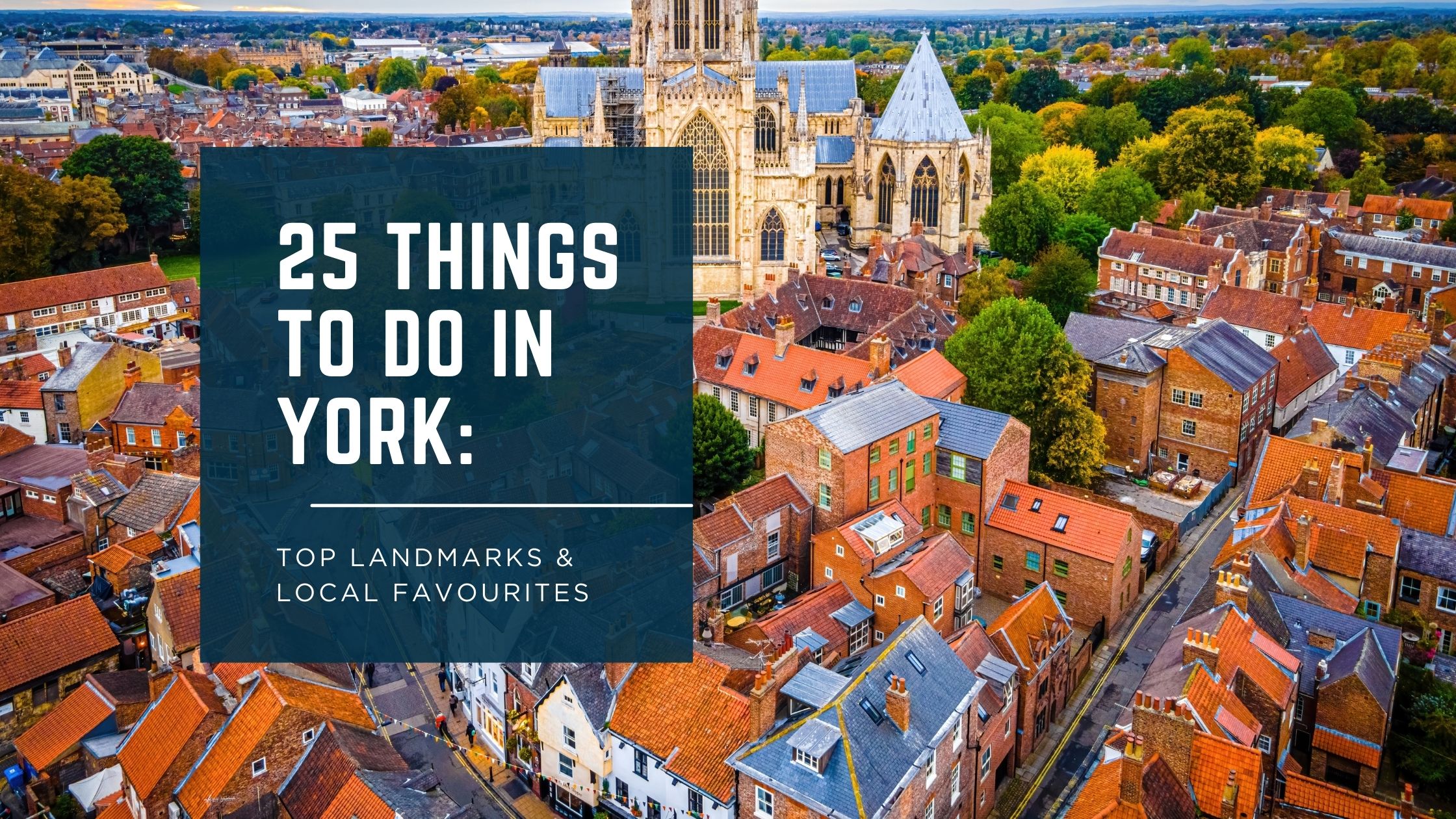
York is one of England’s most captivating historic cities. Medieval streets wind between ancient walls, and Gothic spires pierce the skyline.
This destination blends Roman heritage, Viking history, and Victorian charm. Visitors find a treasure trove of cultural enrichment and memorable experiences.
Whether you love cathedrals, museums, river cruises, or ghost tours, York has activities for every interest and age group. From exploring Viking settlements to sampling world-famous chocolate, the city weaves together past and present for unforgettable moments.
1) Visit York Minster, Northern Europe’s largest Gothic cathedral

York Minster is one of the most magnificent Gothic cathedrals in Northern Europe. This masterpiece has dominated York’s skyline for centuries.
The current building is around 800 years old. Christian worship has taken place here for nearly 2,000 years.
We can explore the cathedral’s vast spaces and breathtaking architecture. The Minster houses important medieval art and stunning stained glass windows.
Its intricate stonework and towering spires reach 230 feet into the sky. Adventurous visitors can climb 275 steps to the Central Tower for panoramic city views.
The climb lets us see medieval stonework up close. The cathedral showcases Roman roots and tells the story of Viking York.
Construction began in the 13th century, and the building was consecrated in 1472. Tower trips run regularly and can be booked inside the Minster.
This Gothic masterpiece remains one of York’s essential attractions.
2) Explore The Shambles, a medieval street with timber-framed buildings
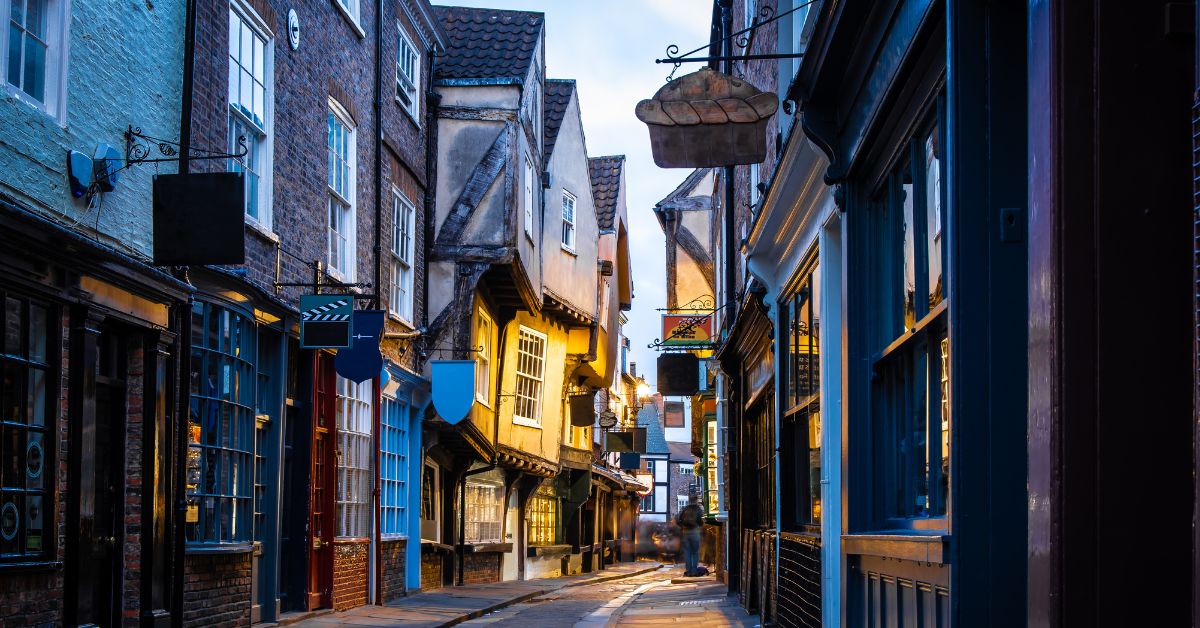
The Shambles is one of Europe’s best-preserved medieval streets. Walking this narrow cobbled lane feels like stepping into history.
The timber-framed buildings date back to the 14th century. Their upper floors nearly touch each other above the street.
This building style, called jettying, created more upstairs space without blocking the street. We can browse unique shops in these ancient structures.
Shops range from quirky boutiques to traditional craft stores. The street gets busy during peak season, so visiting early morning or late afternoon is more relaxed.
The narrow lane winds through York’s historic centre. The overhanging buildings create shifting shadows, making it a photographer’s delight.
Local shops sell handmade goods and Harry Potter merchandise. The street’s look inspired comparisons to Diagon Alley.
3) Walk the historic city walls surrounding York
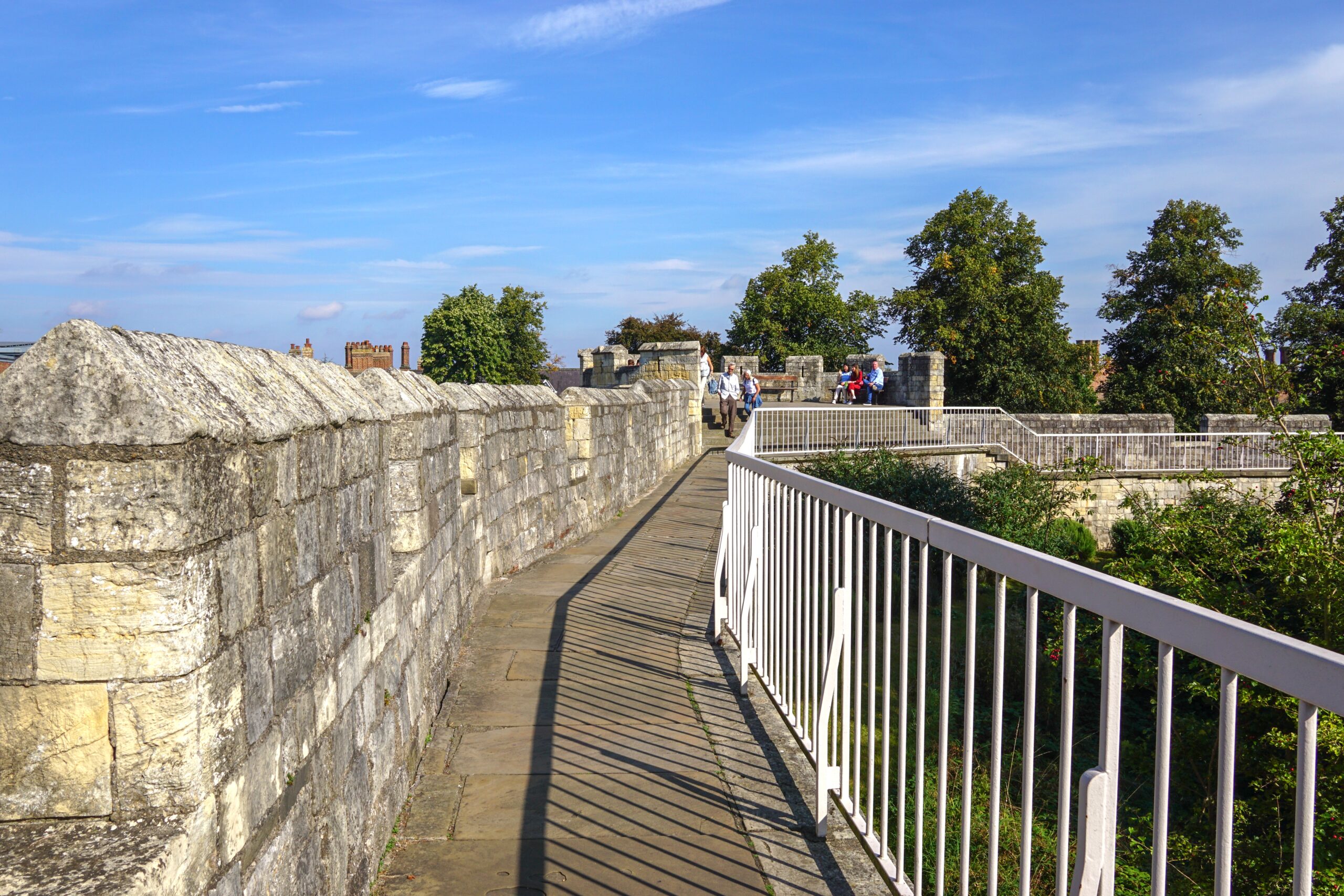
York’s medieval city walls stretch for 3.4 kilometres around the centre. They’re the longest intact medieval town walls in England.
We can walk these ancient walls for free. They’re open daily from about 8am until dusk, weather permitting.
The walls date back to the 12th-14th centuries. As we stroll along, we see over 2,000 years of York’s history.
A full circuit takes about 2 hours, but we can join at various access points. The walls offer stunning views across York’s rooftops and gardens.
We’ll pass through grand medieval gateways called “bars.” Some sections lack railings, so we should watch children carefully.
The Friends of York Walls provide online guides with maps. These highlight the best access points and historical features.
This elevated walk gives us a unique perspective of York. We’ll see the city from viewpoints many tourists miss.
4) Tour York Castle Museum featuring Victorian streets and exhibitions

We can step back in time at York Castle Museum, set in former 18th-century prison buildings. The museum presents over 400 years of social history in one location.
The star attraction is Kirkgate, a recreated Victorian street. We walk along cobbled paths and explore authentic shopfronts from the 19th century.
The museum features reconstructions of different periods. We can visit Jacobean dining rooms and exhibitions showing how people lived long ago.
Kirkgate includes backstreets and authentic York businesses with thousands of goods on display. The street reveals both rich and poor Victorian life.
We can also tour the original prison cells where infamous prisoners once lived. These spooky cells add intrigue to our visit.
The museum covers everything from Victorian times to the swinging sixties. Entry tickets are valid for a full year.
We should book tickets in advance, especially during school holidays. The museum is about 25 minutes’ walk from York train station.
5) Experience the York Dungeon for interactive historical theatrics
The York Dungeon offers a theatrical journey through 2,000 years of the city’s darkest history. We explore this immersive attraction through live performances.
Professional actors guide us through ten themed scenes. Each room features a different historical period with detailed sets and special effects.
The experience lasts about 60-75 minutes. We encounter stories from the Black Death, Roman times, and medieval torture chambers.
Actors engage directly with visitors, creating memorable moments and teaching about Yorkshire’s history. Special effects enhance each scene with dramatic lighting and sound.
The York Dungeon suits older children and adults who enjoy theatrical experiences. It’s within walking distance of York railway station.
We can expect both laughs and scares during our visit. The attraction balances education with entertainment, making history engaging through performance.
6) Enjoy a cruise on the River Ouse
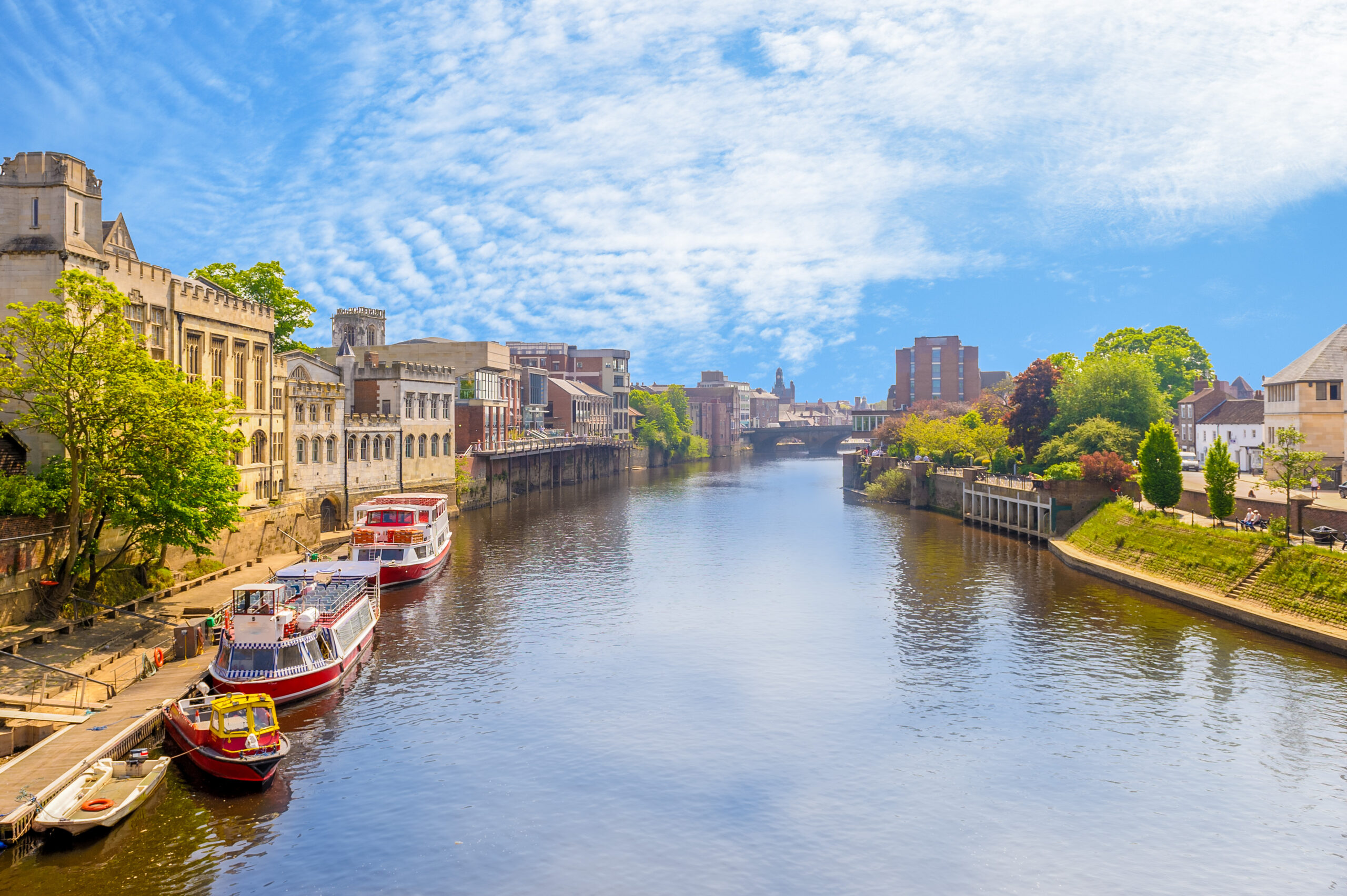
We recommend taking a sightseeing cruise on York’s River Ouse for a different perspective. The river has shaped York’s development for over 1,000 years.
City Cruises operates vessels with regular daytime trips. We can sit on the open deck or stay warm indoors.
The cruises last 45 minutes to one hour. We’ll hear live commentary about York’s history and landmarks.
From the water, we see attractions like Clifford’s Tower and the York Museum and Gardens. The boats have onboard bars for refreshments.
Daytime cruises run between 10:30 and 15:00 daily. Evening cruises are available in certain seasons and offer views of York at sunset.
The River Ouse cruise provides a relaxing way to learn about York’s heritage and enjoy scenic views.
7) Visit the National Railway Museum, home to iconic locomotives

The National Railway Museum in York houses the world’s largest collection of railway vehicles and artifacts. We can explore 300 years of British rail history for free.
The museum displays famous trains like Stephenson’s Rocket and the Mallard, the fastest steam locomotive. We’ll also find the Japanese Bullet Train and royal carriages.
Interactive experiences make our visit engaging. The Wonderlab: The Bramall Gallery offers hands-on activities for families.
We can try the Flying Scotsman VR Experience to see this legendary locomotive’s story come alive. The museum’s halls contain thousands of railway objects and engineering marvels.
A road train runs regular trips between York Minster and the museum. This adds a fun railway-themed way to travel.
The museum makes an excellent day out for train enthusiasts and families. We can spend several hours exploring Britain’s railway heritage.
8) Discover chocolate history at York’s Chocolate Story
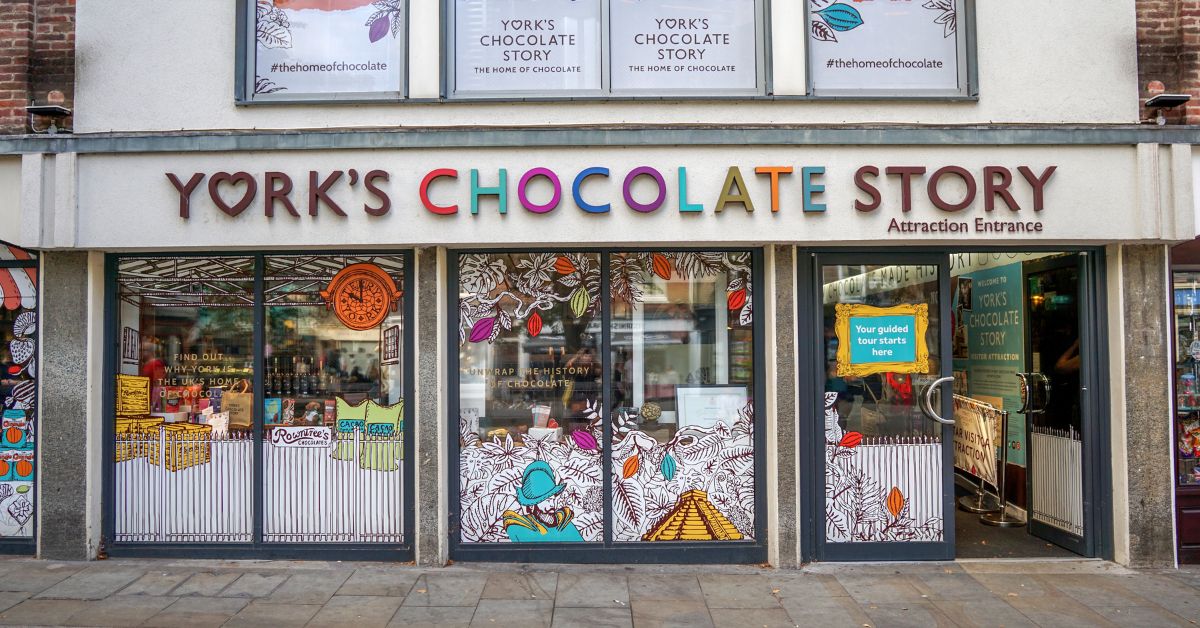
York’s Chocolate Story takes us on a journey through the city’s sweet heritage. This interactive museum sits in the city centre and explains how York became famous for chocolate.
We learn about the Rowntree and Terry families, who built their chocolate empires here. The guided tour covers chocolate’s origins and how it’s made.
We discover secrets behind treats like KitKat, Quality Street, and Terry’s chocolates. During our visit, we taste different chocolates and learn to taste like experts.
The tour shows what life was like for factory workers in the old chocolate companies. The museum covers both past and present chocolate making, including sustainable production.
This award-winning attraction is great for families and chocolate lovers. The interactive displays keep everyone engaged as we explore York’s chocolate legacy.
9) Explore Clifford’s Tower, a Norman castle keep

Clifford’s Tower is York’s most iconic Norman landmark. We can explore what remains of York Castle, built by William the Conqueror in 1068.
The stone tower sits atop a grassy mound in the city centre. It’s the largest surviving part of what was once northern England’s greatest medieval fortress.
We can climb the steep steps to reach the top. Three resting places along the way make the climb easier.
Inside, we’ll discover key periods of the tower’s history. The structure was originally called the King’s Tower before becoming Clifford’s Tower.
The new roof deck offers spectacular 360-degree views across York. We can spot landmarks like York Minster from this vantage point.
Information panels help us trace the history of this part of York. The welcome area at the base includes a tactile map of the castle and city.
This map helps us understand the layout before we begin exploring this Norman keep.
10) Visit the Jorvik Viking Centre to learn about Viking York
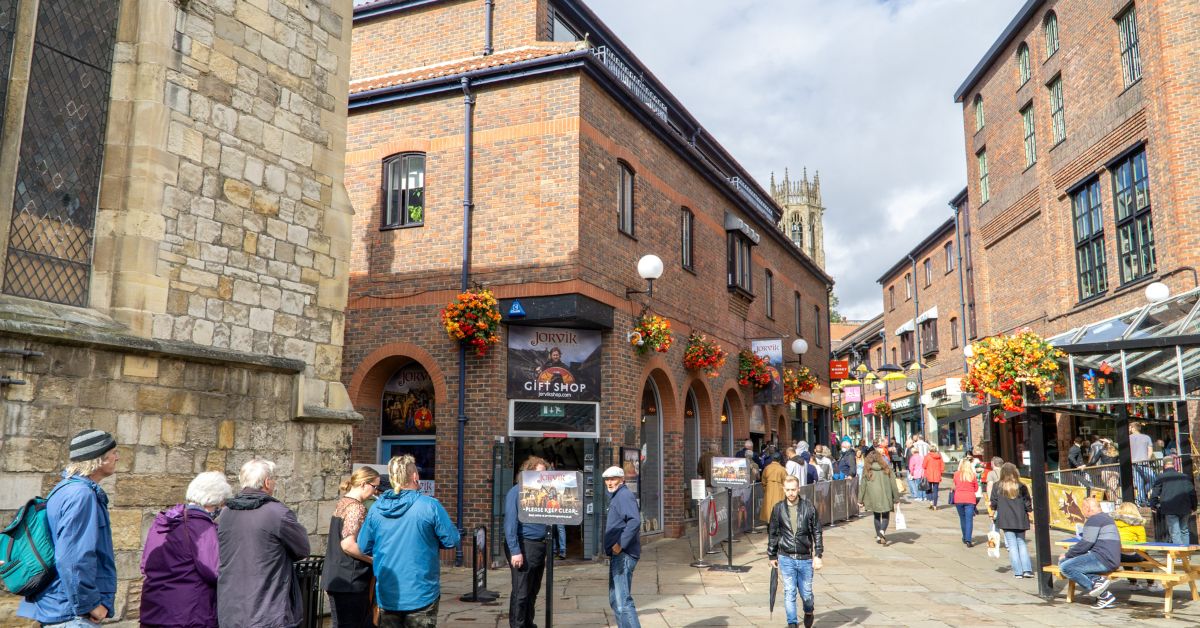
We recommend booking tickets in advance for this world-famous attraction. The Jorvik Viking Centre sits on the actual site where Vikings lived over 1,000 years ago.
The centre offers an immersive journey back to AD 960. We can ride through reconstructed Viking streets and buildings.
The experience begins with the Coppergate Dig display. This shows archaeological discoveries from the 1970s that revealed Viking houses and workshops beneath York.
We’ll see hundreds of authentic Viking objects left by 10th-century residents. These artefacts tell stories about daily life in Viking times.
The centre features interactive exhibits and galleries filled with Viking treasures. We can meet costumed Viking hosts who share tales from the past.
One highlight is striking our own Viking coin to take home as a souvenir. The Vikings called York “Jorvik” when they settled here.
This attraction brings their culture and history to life through sights, sounds, and authentic smells of the Viking era.
11) Stroll the beautiful Museum Gardens

Museum Gardens is one of York’s most peaceful spots in the city centre. We can explore ten acres of landscaped gardens beside the River Ouse for free.
The gardens feature several themed areas. We’ll find a fern garden framed by ancient abbey stones and a peaceful rockery area.
There’s also a wildflower meadow that blooms in spring. Historic ruins add character throughout our walk.
The remains of St Mary’s Abbey, dating from 1294, create a stunning backdrop. We can also spot the Multangular Tower and explore the crypt of St Leonard’s Hospital.
The gardens provide a perfect place to take a break from sightseeing. We can stroll along tree-lined paths or find a quiet spot for a picnic.
Museum Gardens connects easily with other attractions. The Yorkshire Museum sits within the grounds, and we’re just steps from York Minster and shopping areas.
12) Tour Treasurer’s House, a historic townhouse with gardens
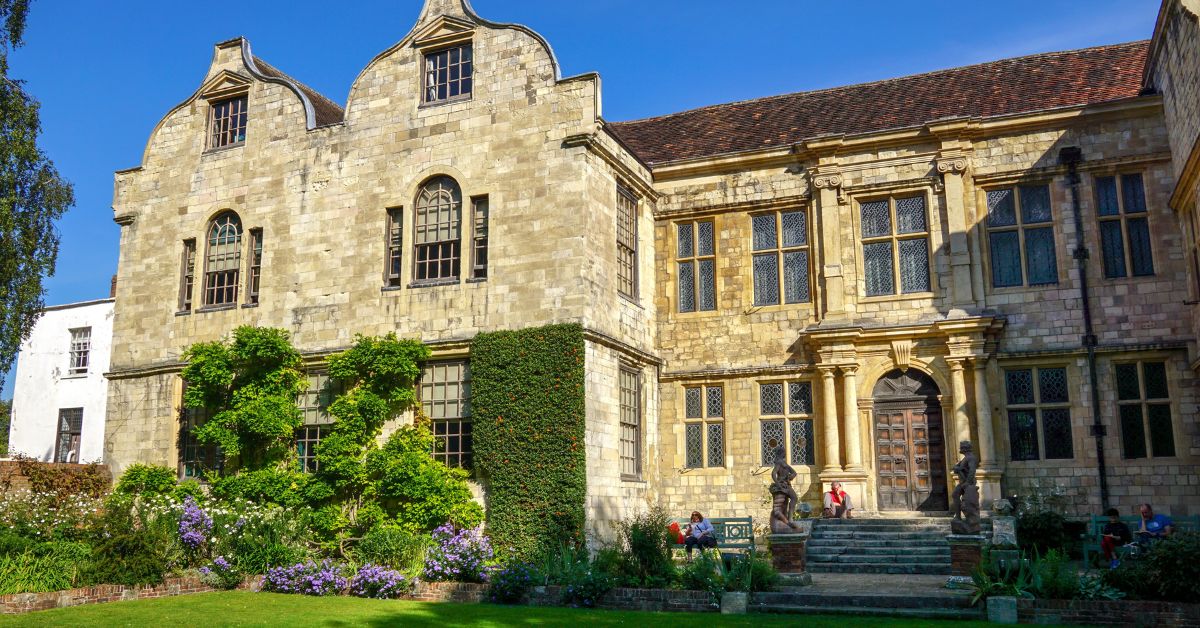
We recommend visiting Treasurer’s House, one of York’s hidden gems located behind York Minster. This late 16th-century townhouse sits on the site of the former Treasury to York Minster.
Frank Green purchased the property in 1897. He transformed three separate houses into one grand home as a showroom for his collection of art, antiques, and furniture.
We can book guided tours that last about an hour. These tours reveal the house’s fascinating history and showcase Frank Green’s eccentric personality.
The house displays Green’s unique vision of a historic home. He mixed different decorating styles and periods throughout the rooms.
The beautiful gardens surround the house and offer a peaceful break from York’s busy streets. Manicured pathways and seasonal blooms create a relaxing atmosphere.
Dogs are welcome in the gardens. This makes it a perfect stop for visitors exploring York city centre with their pets.
13) Explore the Merchant Adventurers’ Hall, a medieval guildhall
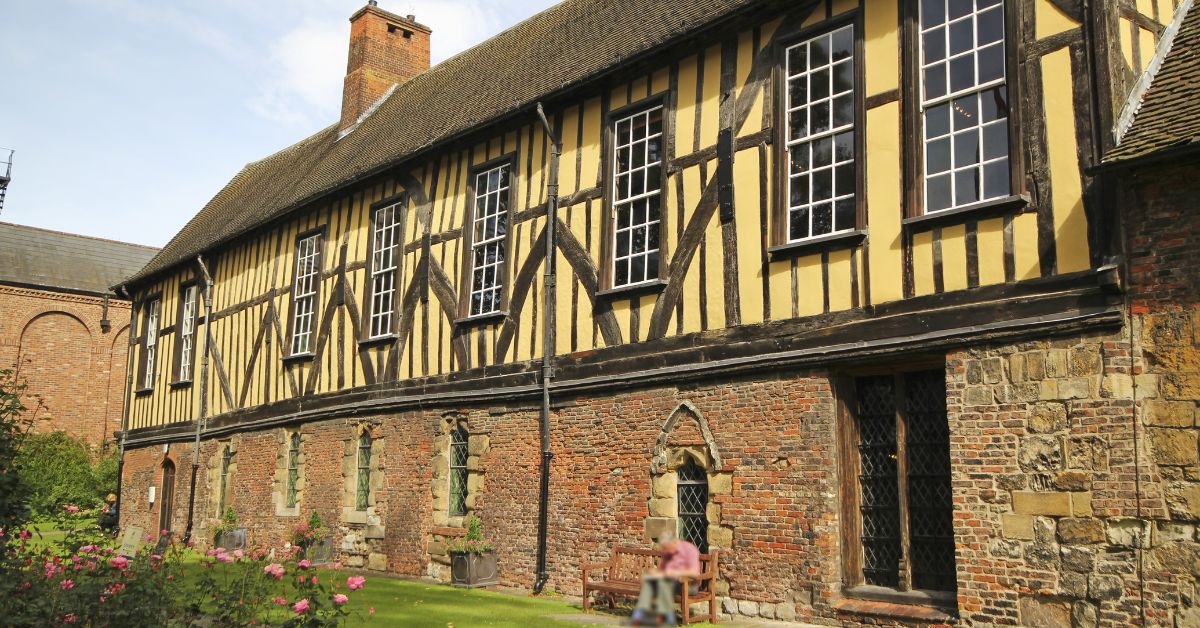
The Merchant Adventurers’ Hall is one of Britain’s finest medieval guildhalls. Built between 1357 and 1361, this timber-framed building predates most other guild halls in the country.
We can explore this Grade I Listed building, which is also a Scheduled Ancient Monument. The hall remains the largest timber-framed building in the UK still used for its original purpose.
Inside, we’ll discover exhibits about York’s role as an international port. The first floor features displays showing how the hall functioned as a hospital throughout different periods.
Interactive games let us learn about medieval market forces and overseas trading. These activities explain how merchant entrepreneurs shaped York’s development from the 14th century onwards.
The hall opens Sunday through Friday from 10:00 AM to 4:30 PM. Saturday hours run from 10:00 AM to 1:30 PM.
We should check availability beforehand, as private events sometimes close the building. Guided tours with hands-on activities allow us to handle medieval-style objects like parchment, quills, and seals.
14) Attend performances at the Grand Opera House
The Grand Opera House York, has entertained audiences since 1902. We can catch world-class live entertainment in this historic Grade II listed building.
The theatre hosts West End musicals, comedy shows, concerts, and family performances. With a capacity of 1,000, we enjoy an intimate experience with top-quality productions.
In 2025, we can see exciting shows like SIX, the modern musical about Henry VIII’s wives. The theatre also features ABBA tribute shows and classic plays throughout the year.
The venue has welcomed famous performers like Dame Judi Dench, Sir Ian McKellen, and Adele. We follow in the footsteps of audiences who’ve enjoyed entertainment here for over a century.
Tickets start from around £13, making it accessible for most budgets. We can book directly through their box office or authorised ticket sellers.
The Grand Opera House offers something for everyone, from teenagers enjoying contemporary musicals to families watching children’s shows. It’s a perfect evening out in York’s cultural scene.
15) Visit Barley Hall, a reconstructed medieval townhouse
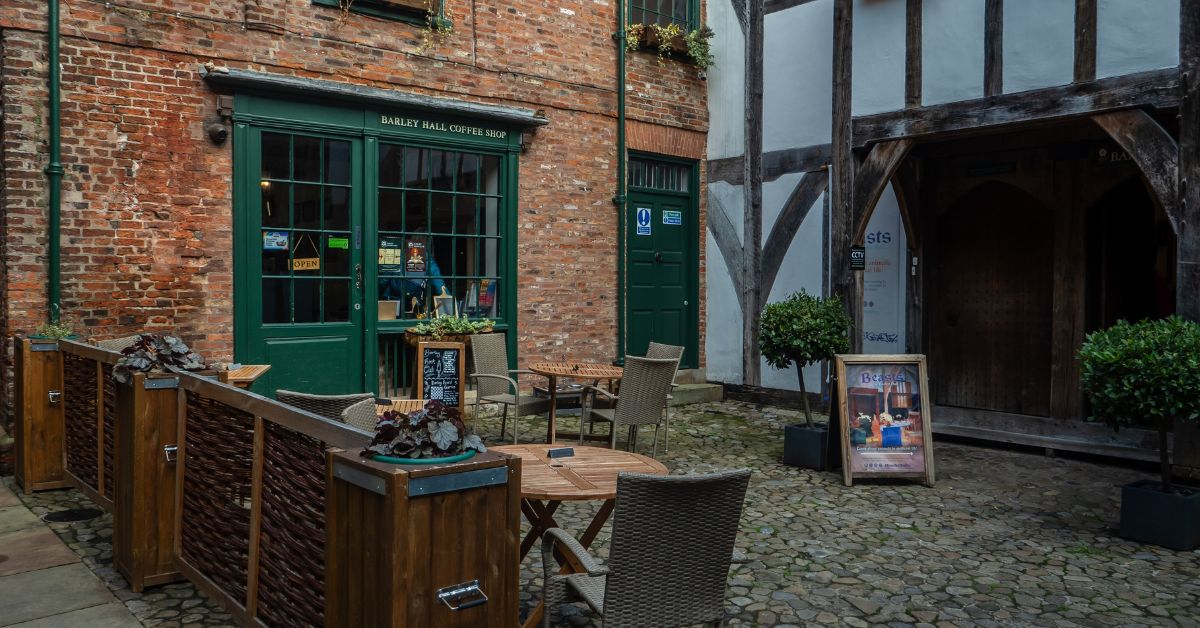
We can discover one of York’s best-kept secrets at Barley Hall. This stunning medieval townhouse dates back to around 1360, when monks from Nostell Priory built it.
The building later became home to wealthy merchants and a Lord Mayor of York. Until the 1980s, a modern facade hid this remarkable structure from view.
Toda,y we can explore the beautifully restored rooms with high ceilings and exposed timber frames. The house even features what may be England’s only surviving horn window.
Friendly costumed guides help bring medieval life to this merchant’s home. We learn about the Snawsell family who lived here during the late medieval period.
The hall offers hands-on activities for children. Interactive displays and audio stories help us understand daily life in medieval York.
We can visit from 10:00 to 17:00 between April and October. During the winter months, it closes at 16:00.
Adult tickets cost £6.50, with family passes available. Barley Hall sits tucked away in York’s historic back streets, making it feel like a genuine hidden discovery.
16) Explore York Art Gallery’s extensive collections

York Art Gallery houses one of the most impressive art collections in northern England. We can explore over 600 years of artistic history in one location.
The gallery’s painting collection spans from 14th-century Italian panels to contemporary works. Dutch masterpieces from the 17th century sit alongside Victorian narrative paintings.
We’ll find the largest collection of works by William Etty, York’s most famous artist. The gallery also displays pieces by L.S. Lowry, David Hockney, and Andy Warhol.
The Centre of Ceramic Art holds the UK’s largest ceramic collection. This makes York Art Gallery appealing for pottery enthusiasts.
Italian Old Master paintings feature in the Burton Gallery. We can view these alongside Dutch and Flemish Old Masters, plus early 20th-century modern works.
The gallery sits in York’s city centre, making it easily accessible. The Artists’ Garden, located within the original abbey walls, provides a peaceful space behind the main building.
The collection includes watercolours, oils, ceramics, and drawings. This diversity ensures that something appeals to every artistic taste.
17) Experience ghost tours through York’s haunted streets
York is one of the world’s most haunted cities. We can explore centuries of chilling tales through ghost tours that wind through ancient streets.
The Original Ghost Walk of York claims to be the world’s first exclusive ghost walk. Established in 1973, this tour offers over 50 years of supernatural stories.
We recommend The Deathly Dark Tour of York, which won Experience of the Year 2024. Charismatic performers bring their own eerie persona to the experience.
The Ghost Bus Tours York provides a unique twist on traditional walking tours. We can visit top attractions like Clifford’s Tower and York Minster while learning about their haunted histories.
Most tours last between one to two hours. They take us through the city’s ancient walls and hidden corners where supernatural encounters have been reported.
These walking tours operate year-round and suit both tourists and locals. We’ll discover disturbing tales that have shaped York’s reputation as a centre for paranormal activity.
18) Discover the Yorkshire Museum for archaeology and natural history
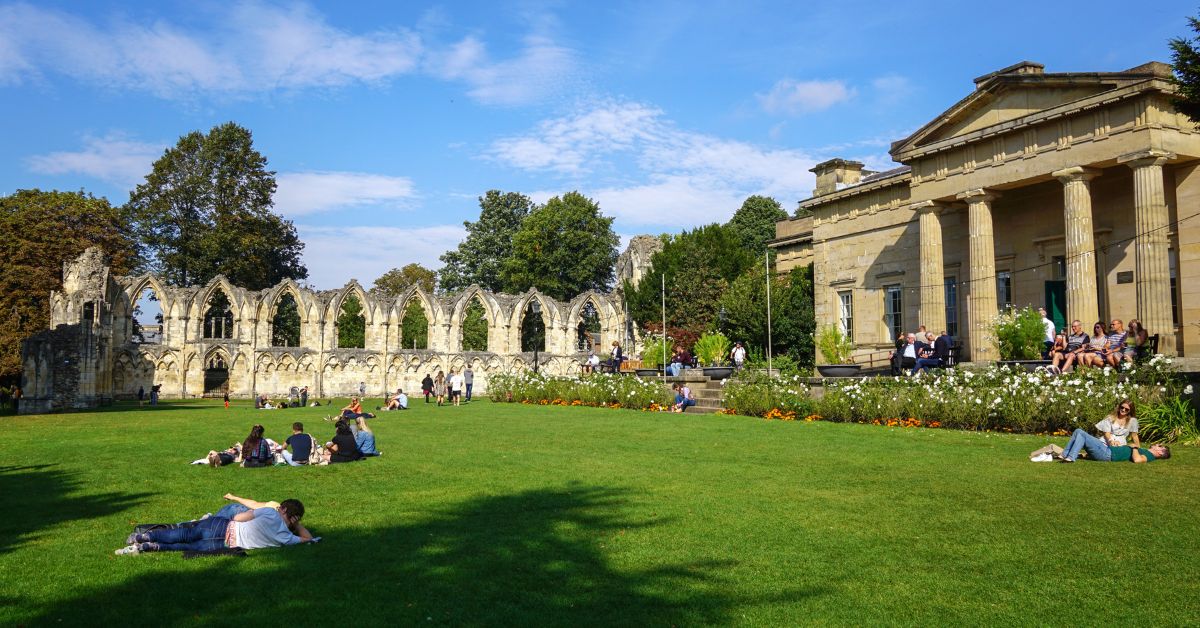
The Yorkshire Museum is one of Britain’s most impressive regional museums. The collection contains nearly one million archaeological objects spanning from prehistoric times to the twentieth century.
The museum focuses on York and North Yorkshire’s rich history. Since 1830, the most significant objects found within the city have joined the museum’s collection.
We can explore Roman and Viking treasures alongside medieval manuscripts. The displays show how people lived in this region across thousands of years.
The natural history collection complements the archaeological finds. Fossils and specimens help us understand Yorkshire’s ancient environment.
The museum building itself holds historical importance as one of Britain’s oldest purpose-built museums. Interactive galleries make the experience engaging for visitors of all ages.
We recommend attending informative talks and workshops. These events provide deeper insights into Yorkshire’s fascinating past.
The museum sits in beautiful grounds worth exploring. The combination of indoor exhibits and outdoor spaces creates a full day of discovery.
19) Shop at Shambles Market for local goods
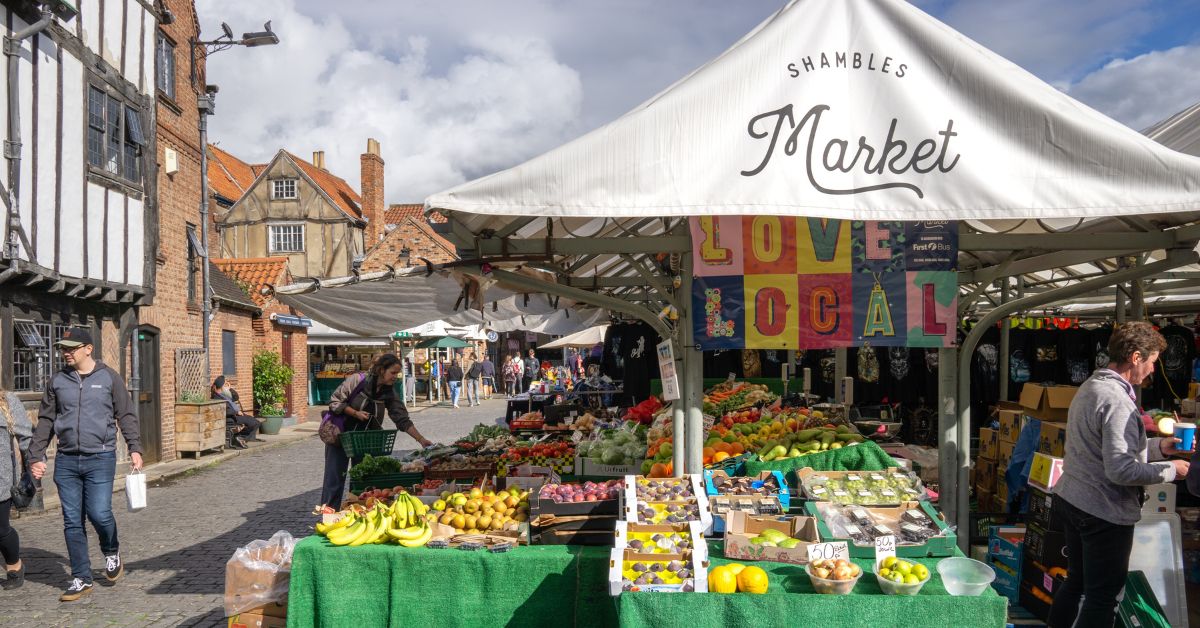
We recommend visiting Shambles Market for an authentic York shopping experience. This daily market features the largest collection of independent traders in the city.
The market sits in one of York’s most historic locations, next to the famous medieval Shambles Street.
We find an excellent variety here. Local traders sell quality gifts, fresh flowers, and handmade crafts.
The independent businesses offer foodie treats, jewellery, and clothing. We can also find unique accessories and local souvenirs.
Fresh produce is available daily from local vendors. The market operates seven days a week, making it convenient for any visit.
The food court serves as a central hub with various street food options. The combination of local goods and historic setting makes this market special.
Independent traders provide authentic York products that support the local economy.
20) Enjoy afternoon tea in Bettys Café Tea Rooms
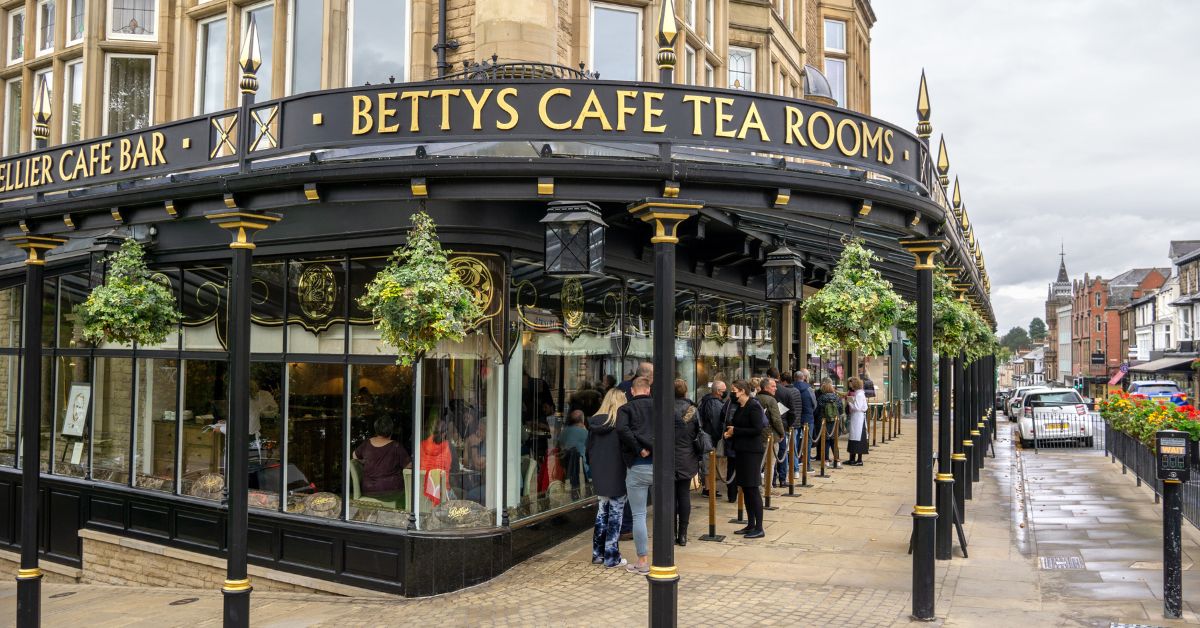
We must visit Bettys when exploring York. This famous tea room has served afternoon tea for over 100 years.
The café sits on St Helen’s Square in a beautiful building. Inside, we’ll find interiors inspired by the Queen Mary ocean liner from 1936.
For afternoon tea, we sit upstairs in the grand Belmont Room. Staff wear traditional black and white uniforms with aprons.
We can book afternoon tea to skip the main queue. The experience includes tea served in silver teapots and food on gleaming silver cake stands.
The afternoon tea features finger sandwiches with smoked salmon, Yorkshire ham, and roast chicken. We also get fresh scones with jam and clotted cream.
The menu offers pastries and cakes made by hand. We can choose from Betty’s own tea blends or exclusive coffees.
Many consider Betty’s the home of afternoon tea in England. People travel from around the world for this special experience.
We should dress smartly for the occasion. The atmosphere feels luxurious and traditional, perfect for a memorable afternoon in York.
21) Visit York’s Guildhall, a historic civic building
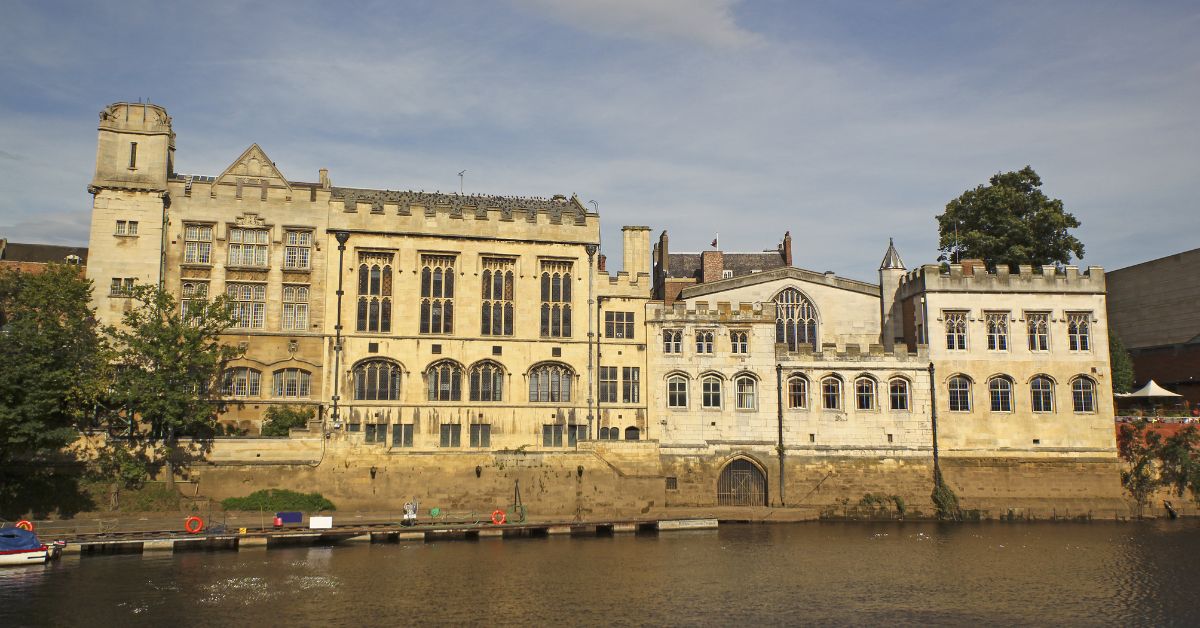
The Guildhall is one of York’s most important historic buildings. We can find it on the north bank of the River Ouse, tucked behind the Mansion House.
This Grade I listed building dates back to 1445. It was originally built for the Guild of St Christopher and St George as a meeting place for York’s medieval guilds.
For over 600 years, the Guildhall has been the centre of civic life in York. The building has hosted council meetings and mayoral ceremonies, and it continues to serve as a venue for civic governance today.
We can access the Guildhall through the Mansion House arch from St Helen’s Square. The University of York now leases the building, which has been carefully restored for modern use.
The building combines historic architecture with contemporary facilities. It now serves as a conference venue, business hub, and event space whilst maintaining its civic functions.
The restoration project has preserved the building’s historical significance. We can still see the original medieval features alongside modern amenities for 21st-century use.
22) Explore St Mary’s Abbey ruins within Museum Gardens

We can discover one of York’s most impressive historical sites at St Mary’s Abbey within the Museum Gardens. The abbey was built in 1088 and became one of northern England’s wealthiest Benedictine monasteries.
The ruins we see today tell a fascinating story. Henry VIII dissolved the abbey in 1539, and the buildings were later converted into a royal palace.
Over time, they fell into ruin before being properly excavated in the 1820s. We can walk amongst the remaining walls of the church and cloisters.
The north and west walls are particularly well-preserved and create a dramatic backdrop for photography. The abbey ruins sit within the beautiful 10-acre Museum Gardens beside the River Ouse.
This peaceful setting makes it easy to imagine what life was like for the monks who once lived here. The ruins sometimes serve as a venue for the York Mystery Plays.
We can explore the site year-round as part of our visit to the Museum Gardens, which also houses the Yorkshire Museum and other historical attractions.
23) Cycle along the Foss Islands Cycle Track
The Foss Islands Cycle Track gives us a brilliant traffic-free route through York’s eastern areas. This green pathway runs from the city centre at Foss Islands Retail Park all the way to Osbaldwick.
The track follows the old Derwent Valley Light Railway route. This historic railway carried sugar beet to Rowntree’s factory from 1913 until 1980.
We’ll pass St Nicholas Field nature reserve along the way. The route also takes us through lovely countryside areas perfect for a peaceful ride.
The brick Foss Islands Chimney serves as a local landmark. Many cycling groups use this distinctive tower as a meeting point for leisure rides.
This path connects well with other cycling routes in York. It forms part of the wider walking and cycling network that links the city centre to eastern neighbourhoods like Tang Hall.
The track provides an easy way to travel from East York to the centre. We can enjoy a car-free journey while exploring more of this historic city by bike.
24) Visit the Richard III Experience at Monk Bar
The Richard III Experience stands inside Monk Bar, the tallest of York’s four historic gatehouses. This museum sits right in the medieval city walls.
The museum tells the story of Richard III, England’s most controversial king. He was the last ruler of the Plantagenet dynasty.
We can explore his early life and learn about key battles of the Wars of the Roses. The museum displays arms and armour from his reign and uses multimedia presentations.
Richard III ruled for just two years, from 1483 to 1485. Historians still find his story fascinating and often debate his legacy.
Our admission ticket includes both the Richard III Experience and the Henry VII Experience at Micklegate Bar. We can walk along the city walls between the two attractions and enjoy views of York Minster.
The complete visit takes around two hours. We get an excellent introduction to medieval York and one of its most intriguing historical figures.
25) Explore the Treasurer’s House gardens in summer
We can escape the busy streets of York by visiting the award-winning gardens at Treasurer’s House. These beautiful gardens sit right next to York Minster in the city centre.
The gardens have won gold awards in Yorkshire in Bloom for six years running. This makes them some of the finest urban gardens in the region.
During summer, we can enjoy the gardens free of charge on open days. They’re usually open from 11 am until 4:30 pm for visitors to explore.
The compact garden offers one of the best views in York. We can relax among the seasonal blooms and take in the backdrop of the nearby Minster.
Summer is the perfect time to see what’s in bloom throughout the garden. The mature plantings provide colour and interest during the warmer months.
These gardens serve as a peaceful oasis where we can take time out from sightseeing. The space offers a quiet retreat without leaving the historic city centre.
The gardens sit behind the historic Treasurer’s House building. This hidden gem provides the perfect spot for a summer break in York.
Getting Around York
York’s compact city centre makes it easy to explore on foot. Excellent bus services connect the outer areas.
The flat terrain and dedicated cycle paths suit all fitness levels.
Public Transport Options
First York operates the main bus network throughout the city. Their services run frequently between 6am and 11pm on most routes.
The Park & Ride scheme offers four locations around York’s outskirts. These sites provide free parking with regular bus services into the city centre every 10-15 minutes.
Key bus routes include:
- Route 4: Connects the railway station to York Designer Outlet
- Route 1: Links Acomb with Monks Cross Shopping Park
- Route 6: Serves York Hospital and the University of York
Single bus fares start from £2.20 for adults. Day tickets cost £4.50 and allow unlimited travel on First York buses.
York railway station sits just outside the city walls. It offers direct connections to London, Edinburgh, Manchester, and Leeds.
Walking and Cycling Routes
York’s medieval city centre spans roughly one square mile. Most attractions are within a 10-minute walk of each other.
The ancient city walls create a 2.5-mile circular walking route. This path takes about 2 hours and offers excellent views across the city.
Dedicated cycle paths include:
- The Solar System Cycle Path follows the River Ouse for 6.4 miles
- National Cycle Network Route 65 connects York to Selby
- The Railway Path links the city centre to the University of York
Several shops hire bicycles for £15-20 per day. Most provide helmets and basic repair kits.
York’s compact size means walking is the quickest way to travel between central attractions. The flat terrain suits all ages and abilities.
Accessible Travel Tips
York city centre features dropped kerbs at most major crossing points. The main shopping streets of Stonegate and Coney Street have level access.
Shopmobility York provides free wheelchair and mobility scooter hire from their base in the Coppergate Centre. They require advance booking during busy periods.
The cobbled streets around the Shambles can be challenging for wheelchair users. Alternative level routes exist via Parliament Street and Davygate.
York railway station offers step-free access to all platforms. Staff assist passengers with mobility needs when booked 24 hours in advance.
Most First York buses have low floors and wheelchair spaces. The Park & Ride services guarantee accessibility for all vehicles.
Insider Tips for Enjoying York
Spring and summer offer the warmest weather. Knowing basic local customs and preparing for York’s changeable climate will enhance your visit.
Best Times to Visit
Spring (March-May) brings mild temperatures and fewer crowds than summer. The city gardens bloom beautifully during this period.
Summer (June-August) offers the warmest weather, typically 18-22°C. This is peak tourist season, so attractions will be busier.
Autumn (September-November) provides crisp weather and stunning colours around the city walls. Tourist numbers drop after September, making it ideal for exploring.
Winter (December-February) can be quite cold, but the Christmas markets create a magical atmosphere. Many outdoor attractions have reduced hours.
Visit Tuesday through Thursday to avoid weekend crowds. Arrive at popular sites like York Minster before 10am or after 4pm for smaller queues.
Local Etiquette
Yorkshire folk appreciate politeness and friendliness. A simple “please” and “thank you” go a long way in shops and restaurants.
Stand right on the escalators and walk left. This applies throughout the city’s shopping centres and train stations.
In pubs, order at the bar rather than waiting for table service. It’s customary to buy rounds when drinking with others.
Don’t block narrow medieval streets when taking photos. The Shambles gets particularly congested, so step aside for pedestrians.
Queue properly at attractions and transport stops. Jumping queues is considered very rude.
Weather Considerations
York’s weather changes quickly throughout the day. Pack layers, including a waterproof jacket, even during summer months.
Rainfall occurs year-round, with October through January being the wettest. Carry a compact umbrella or waterproof coat.
Footwear should be comfortable and sturdy. The city’s cobbled streets can be slippery and uneven when wet.
Winter temperatures rarely drop below freezing, but wind chill along the city walls can make it feel much colder.
Check weather forecasts before visiting outdoor attractions like Clifford’s Tower or planning walks along the medieval walls.
Conclusion
York offers countless ways to explore its rich history and vibrant culture. Walking the medieval walls or discovering hidden gems in The Shambles adds something special to your visit.
Planning your York adventure becomes easier when you know what interests you most. Whether it’s York Minster, fascinating museums, or the lively food scene, this historic city delivers memorable moments for every traveller.
Finding the right base for your York exploration matters. At JF Property Partners, we help visitors and residents discover the perfect properties in Yorkshire’s most beloved destinations, ensuring your stay in this remarkable city feels like home.
Frequently Asked Questions
These common questions address practical concerns about visiting York, from time constraints to romantic activities and shopping opportunities.
What to do in York in a day?
Start at York Minster to admire its Gothic architecture, then wander The Shambles for unique shops and historic charm. Walk the medieval city walls for great views and, if time allows, visit York Castle Museum or the Jorvik Viking Centre for an insight into the city’s fascinating past.
What is York most famous for?
York is most famous for its remarkably preserved medieval city walls, the magnificent York Minster, and its Roman and Viking heritage. Attractions like the Jorvik Viking Centre and the city’s centuries-old streets make it a standout destination.
Is York worth visiting?
Yes, York is well worth a visit. The city combines 2,000 years of history with vibrant culture, excellent restaurants, and plenty of things to see and do, all within a compact, walkable centre.
Why do tourists go to York?
Tourists visit York for its exceptional historical sites, stunning architecture, and lively atmosphere. From Roman ruins to medieval streets and world-class museums, the city offers something for everyone.
What romantic outings are available for couples in York?
Couples can enjoy an evening stroll along the city walls, a riverside walk through Tower Gardens, or a candlelit dinner in a historic restaurant. Ghost walks in the medieval streets add a memorable and atmospheric experience.
What is the main shopping street in York?
Parliament Street is York’s main shopping street, with a range of high street stores. The Shambles and Stonegate offer a more historic setting, with independent shops, boutiques, and galleries.
About the Author

Joost Mijnarends
Joost is the co-founder of JF Property Partners, a family-run property business in the UK. His journey began with a £1 course that led to their first rent-to-rent property in 2023, and today he helps landlords and tenants find better property solutions.
